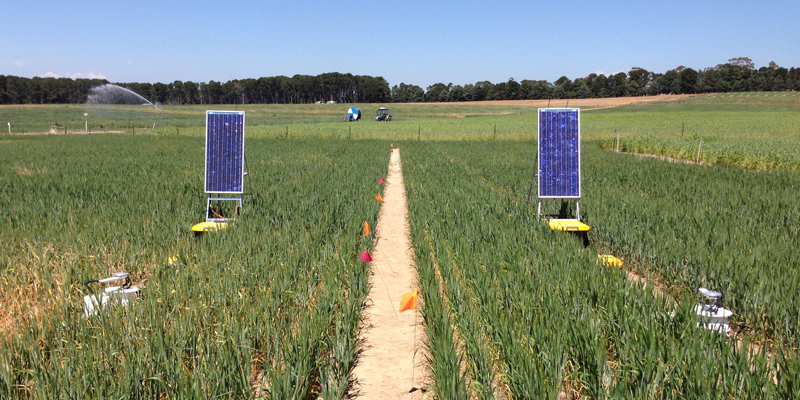News
Results released from world-leading CO2 monitoring project
Published:16 November 2016
Results released from world-leading CO2 monitoring project

Geoscience Australia and the CO2CRC Limited have released new data from three sub-surface release experiments undertaken at the Ginninderra Controlled Release Facility in Canberra, Australia. These datasets will inform better monitoring strategies, which are essential for carbon capture and geological storage projects.
The pioneering research has enabled scientists to simulate release of carbon dioxide (CO2) from the soil into the atmosphere under controlled experiment conditions, and to assess the performance of different monitoring technologies.
Over 10 different organisations participated in the trials led by Geoscience Australia and CO2CRC Limited at the CSIRO Ginninderra Experiment Station in Canberra, Australia from 2012-2013.
The project included development of world-leading monitoring techniques, including using mobile sensor and remote sensing technology to detect CO2 emissions and impacts. Monitoring results were found to depend on climatic conditions, groundwater levels and the extent of the soil zone above the water table.

Monitoring equipment at the Geoscience Australia-CO2CRC Ginninderra Controlled Release Facility, Canberra.
A controlled release experiment involves safely releasing a known amount of CO2 into the soil, then monitoring how the CO2 moves through the soil and into the atmosphere. The results found significant horizontal movement in the near surface, fundamentally changing perceptions of how CO2 migrates and expresses itself at the near surface. Surface leakage was found to be patchy, a result similar to that observed in other controlled release facilities internationally.
There were also clear shifts in crop responses to high CO2 levels and in the soil microbial community. This is important for understanding the potential impact of CO2 leakage on surrounding agricultural crops. Effects observed during the trial were found to be very localised, and no lasting impact on crop productivity was observed for soils following release of high CO2 during the trials.
A highlight of the work was improved quantification techniques to accurately measure emission rates. Results from a comprehensive assessment of soil flux techniques will be presented at the 13th International Conference on Greenhouse Gas Technologies in Lausanne, Switzerland from 14-18 November. Over 20 monitoring techniques were trialled, with the datasets now available for free download via Geoscience Australia's website.
The intention of this data release is to make the data available for comparison with measurements taken at other controlled release experiments, CO2 storage projects and natural analogues. This will hopefully facilitate the further development of greenhouse gas monitoring technologies, methods and monitoring strategies and increase our understanding of the migration behaviour and impact of near surface CO2 leakage.
Further information
Contact:
Phone:
Email:




